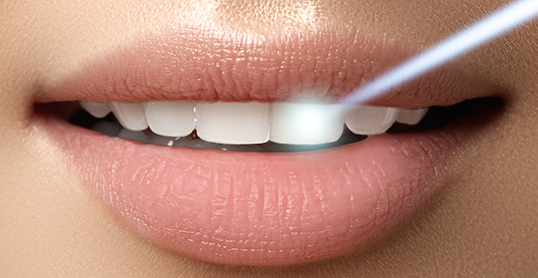
Services
Folsom Family Dentist offers a complete range of dental services to patients in the Boulder area. The following are a list of common procedures that we do in our office. Please do not hesitate to contact us with any questions.
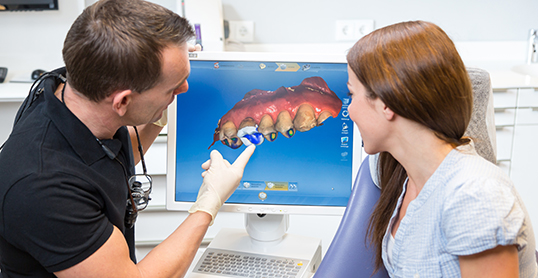
CEREC/CADCAM
In-office crowns have become popular for being completed in one day rather than the traditional two week waiting period — however, not all same-day crown technology is created equal! CEREC is the pioneer and leader in same-day crown technology, and we are equipped with the highest level of this technology for use in creating crowns and onlays in a multitude of different materials — from porcelain to the latest in hybridized ceramics. In fact, CEREC has now become the standard of care for dental laboratories across the country!
PERIODONTAL SCREENING & TREATMENT
The periodontium is composed of the tissues supporting the teeth, primarily, gums and bone. Periodontal screening will take place at your first visit and typically once a year at maintenance appointments. Periodontal screening includes evaluation of bone levels in routine xrays as well as gum measurements taken by the dentist or dental hygienist. This information helps to determine if a patient has periodontal disease and requires a more advanced cleaning often referred to as a “deep cleaning” or referral to the Periodontist. Patients with periodontal disease will require close monitoring and more frequent visits for cleaning as well as education about how to stop the disease from progressing. People who are susceptible to periodontal disease are those who do not regularly visit the dentist for routine care, are lacking in brushing and flossing, are genetically predisposed or have certain systemic diseases such as diabetes. Periodontal disease is also linked with heart disease and preterm/low birth weight babies.
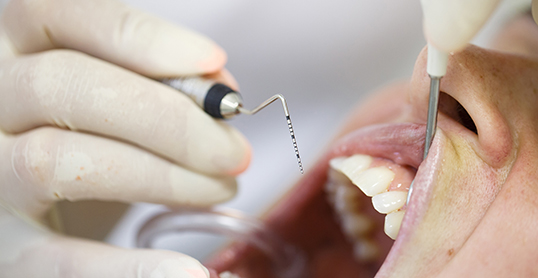

ORAL CANCER SCREENING
This will also be completed at your initial exam and once a year a routine appointments. A visual exam of the gums, tongue, cheeks, floor of the mouth and palate is the first step. If patients have any problems or concerns further action will be taken.
TOOTH COLORED FILLINGS
Tooth Colored Fillings are made of a material called composite resin. They come in many different shades and are nearly invisible when used to restore a cavity or for cosmetic bonding and recontouring. Unlike older, silver fillings composed of amalgam, composite is bonded to the tooth structure therefore providing strength. Composites require less removal of healthy tooth structure than amalgam when preparing the tooth for a filling. Composites are more technique sensitive than amalgam and require a completely dry setting in order to properly bond to the tooth. Because of this composites may need to be replaced more frequently than amalgams.
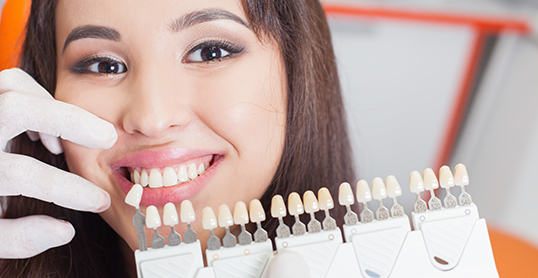

BONDING
Bonding is the term used to describe the process of placing composite resin on tooth structure to achieve a different shape or color. Very minimal healthy tooth needs to be removed. Bonding is a great way to change the look of your tooth in one visit. Bonding, like composite fillings may need to be replaced from time to time due to staining or a loss of bond with the tooth.
VENEERS
Veneers are a more permanent way to change the shape or shade of teeth. Again, very minimal healthy tooth is removed, however, in the case of veneers a temporary is made while a lab fabricates the product. The patient returns for a second, cementation, visit. Veneers are stronger and tend to last longer than bonding as well as often creating a more esthetic result.

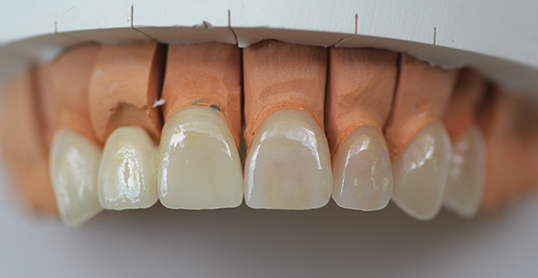
BRIDGES
Bridges are typically used to replace a single missing tooth. Although they can be used to replace more than one tooth, it will be up to the dentist to decide if the surrounding teeth and bone are going to be a good support system for new teeth. Bridges are basically crowns on either side of a missing tooth and a fake tooth in the middle. All three teeth are attached together and are cemented in the mouth. New technology and materials are making bridges stronger and more esthetic than in the past.
IMPLANTS
In the past, missing teeth could only be replaced with bridges or dentures. Although both are still very prevalent today, there is also the option of dental implants. Implants have been around for decades and are great for restoring a single tooth to an entire mouth. Dental implants are done in a few steps. First, there is a consult with the restorative dentist as well as the surgeon who will be placing the implant to make sure you are an appropriate candidate for a successful implant. Then the implant is placed and a temporary appliance is placed if needed. After a period of healing, where the implant actually becomes integrated with the bone, the final restoration is inserted. Implants can be use to support single teeth, bridges and dentures. They are becoming much more commonplace and improving the standard of living for patients everywhere.
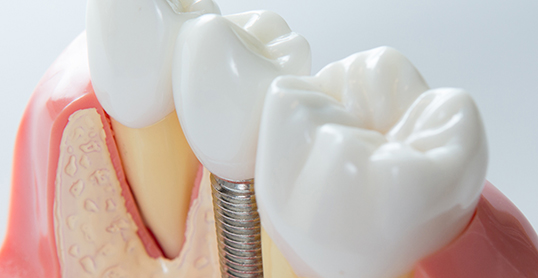
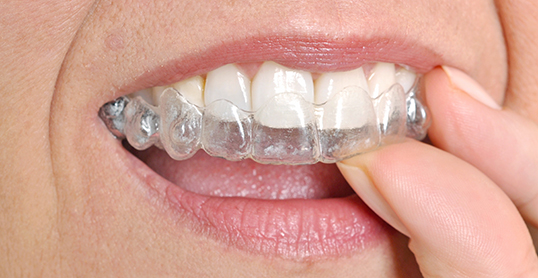
INVISALIGN™
Invisalign™ is a type of orthodontic treatment that is popular with adults who would like to straighten their teeth but who do not want to wear traditional braces. Invisalign™ treatment begins with a consult appointment where Drs. Chelsea or Erin talks with the patient about their expectations and desires and discusses the options available. At the next appointment, impressions of the patient are taken and sent to the Invisalign™ lab where custom plastic aligners are made, which the patient then wears over their teeth. Each aligner is worn for two weeks, day and night and the number of aligners is determined at the consult appointment. For more information or to schedule a consult please call our office.
ROOT CANAL THERAPY
There are multiple reasons a person would require root canal therapy. They include trauma to the tooth, deep decay that reaches the nerve of the tooth and situations where the nerve of the tooth has “died” and led to infection. If root canal therapy is indicated it is completed in 1-2 appointments. First, the nerve of the tooth is removed and the inside of the tooth is cleaned of infection. Second, a filling material is placed in the tooth and seals off the root. Oftentimes, a temporary filling is placed in the crown of the tooth to monitor is for a week or two. Then the crown of the tooth is filled in with a restoration and depending on the location of the tooth in the mouth and the state of the healthy tooth structure left a crown may be required to protect the tooth from breaking.


PARTIAL DENTURES
Partial dentures are used to replace teeth when there are some missing teeth. They are often made with a metal substructure to provide strength and increase the comfort for patients while chewing. Some people are candidates for dentures without metal and options will be discussed with the dentist.
COMPLETE DENTURES
Complete dentures are made when a patient is missing all of his or her teeth on either the top, bottom or both. There are multiple appointments are involved to achieve a great pair of dentures that will last the patient a long time. Great care is taken to select teeth that are the right shape and color and look as natural as possible.
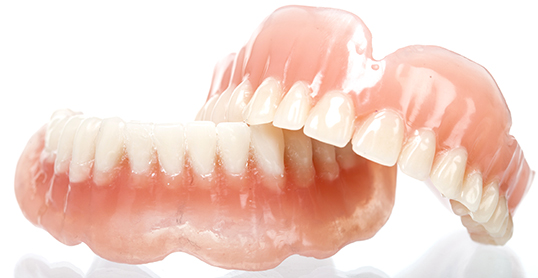

SEALANTS
Sealants are typically placed on adult molars not long after the tooth erupts. The first adult molars come in between 5-7 years of age and the second molars and normally around 12 years. The goal is to seal off the grooves and pits of the teeth to prevent bacteria from entering and causing a cavity. Sometimes the grooves on teeth go all the way into the second layer of the tooth making the possibility of getting a cavity very high. Sealants are very quick to replace and require no anesthesia. Sometimes very minimal drilling is required to remove any “sticky” tooth structure before placing the sealant. Even in these cases, using anesthesia is rare.
FLUORIDE
Fluoride is important for people of all ages! Adult teeth start to develop when we are just a few months old and continue throughout childhood. During this time fluoride can be incorporated into the tooth structure and create a stronger tooth that is less susceptible to cavities. It is important not to ingest too much fluoride at a young age because the teeth can develop white or yellow spots and have a mottled appearance. Once your adult teeth are present, fluoride plays a different role. With everyday eating and drinking, the outer surface of our teeth are constantly demineralizing and remineralizing. When there is fluoride present in the saliva it is incorporated into the outer tooth surface and once again makes a much stronger, cavity resistant compound. You do not run the risk of getting white spots or mottled looking teeth once they are already erupted; it occurs solely during development. People who are prone to cavities or have lots of pre-existing dental work are great candidates for fluoride treatment. It is a cheap and easy way to prevent getting new cavities or decay around existing restorations.


ATHLETIC GUARDS
If you play a contact sport it is important to protect your teeth with an Athletic guard. There are multiple different types depending on the sport and amount of contact. Please call us for a consult.
NIGHT GUARDS & NIGHTTIME APPLIANCES
Sleep medicine is very important part of dentistry, and we strive to inform our patients about TMD (also known as TMJ), snoring and sleep apnea and how it effects your health and longevity. We offer education as well as control of nighttime clenching and grinding, snoring and sleep apnea through the use of guards, NTI’s, mandibular advancement devices, as well resources for treatment of airway issues.


TMJ/TMD
Nighttime grinding and clenching is prevalent in a huge portion of our population. If you wake up with sore teeth, jaws, muscles or headaches, chances are you are either grinding or clenching or both! Night guards are a great way to give your muscles a break as well as protect your teeth from chipping or breaking.
Temporomandibular joint disorders can cause pain in the TMJ, which is the joint that connects the bottom jaw to your head. Symptoms include clicking and popping and can be exacerbated by grinding and clenching. Sometimes referral to a TMD specialist is required.
LASER THERAPY
We offer laser therapy for both cold sore prevention as well as cold sore reduction, as well as for adult and infant frenectomies to help correct issues with tongue or lip ties and aid in breastfeeding.
